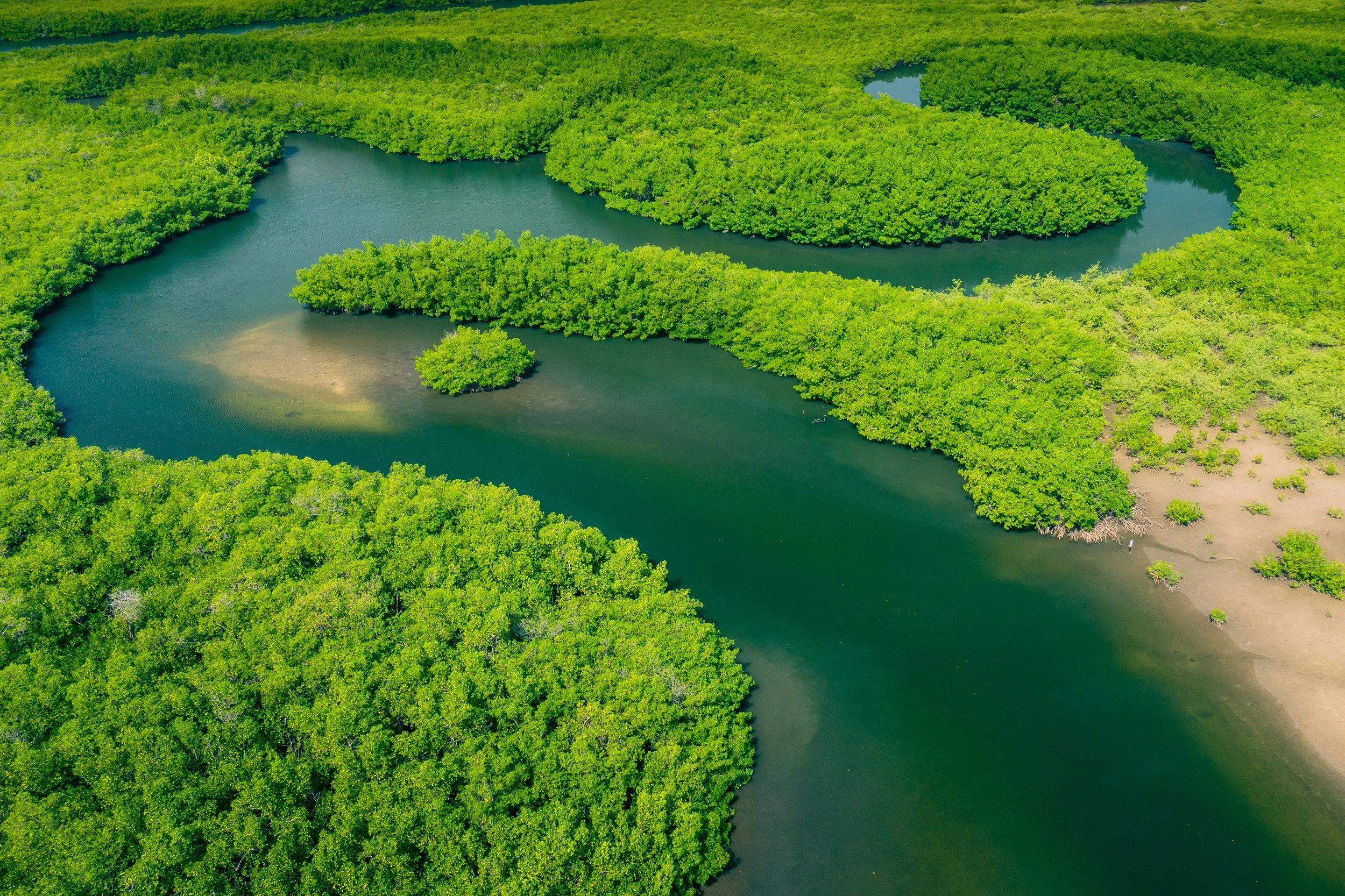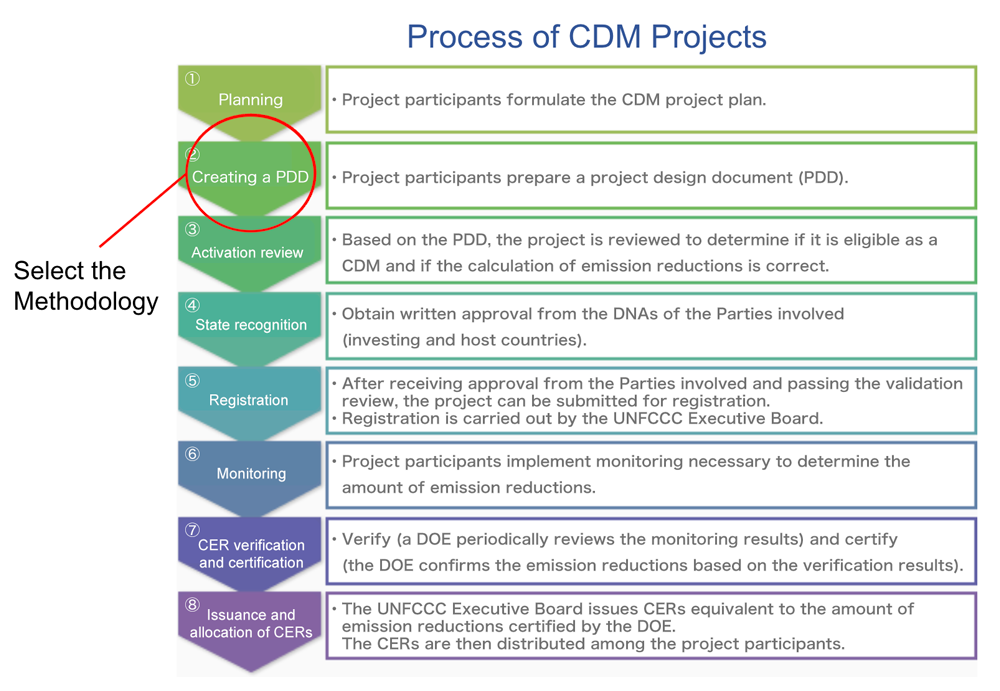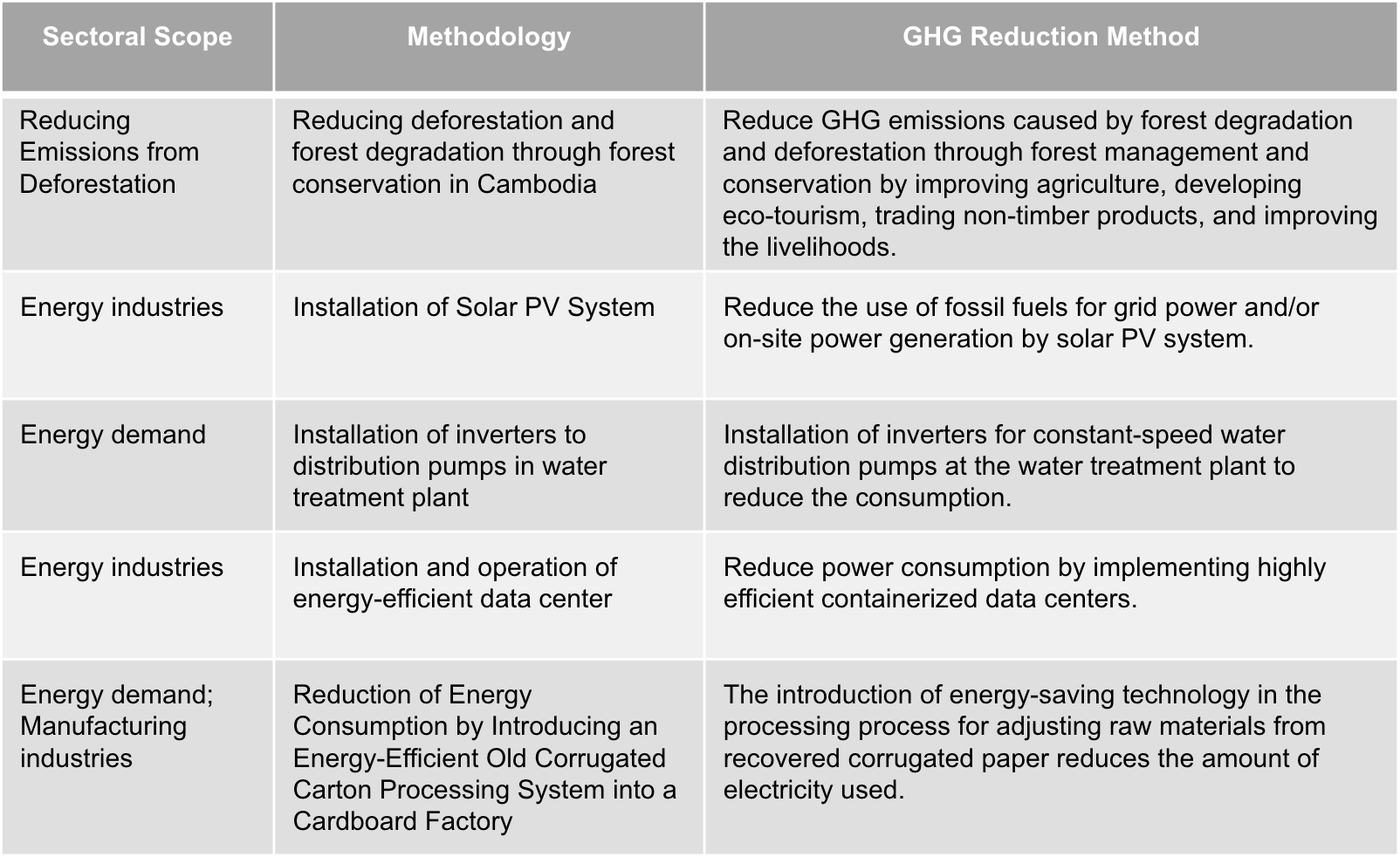What is CWM?
The Future We Strive For
– Protecting the Climate and Biodiversity Through Water Environment Improvement -
■ Global Mechanisms for Greenhouse Gas Reduction
Currently, various mechanisms are in operation around the world to curb global warming. One of the most prominent examples is the Clean Development Mechanism (CDM), operated by the United Nations. Under this system, developed countries invest in greenhouse gas reduction projects in developing countries, and the resulting reductions are returned to the investors in the form of emission credits.
In addition, a range of other mechanisms have been introduced, including Japan’s own J-Credit and Joint Crediting Mechanism (JCM), as well as international standards such as the Gold Standard, Verified Carbon Standard (VCS), and VER+.
■ Mechanisms to Protect Forests as Well
Around the world today, a variety of mechanisms are being implemented to curb global warming. One of the most prominent examples is the Clean Development Mechanism (CDM), operated by the United Nations. This system allows developed countries to invest in greenhouse gas reduction projects in developing countries, and in return, they receive emission credits based on the achieved reductions.
In addition, various other approaches have been introduced, including Japan’s own J-Credit and Joint Crediting Mechanism (JCM), as well as international frameworks such as the Gold Standard, Verified Carbon Standard (VCS), and VER+.
■ There is the Mechanism for Forest
Other mechanisms such as REDD+ have been derived as a result of the development of CDM.
REDD+ is a mechanism that creates incentives to protect forests and earn a living, as opposed to incentives to reduce forests for economic reasons.
It is possible to quantify the amount of greenhouse gases absorbed by the protection and cultivation of forests and convert the tonnage into carbon credits.
But, there is no mechanism for “Clean Water”...
The effluent we release will accumulate sludge when nature is unable to decompose it, and that sludge will produce large amounts of GHG.
Conversely, if the water environment is sufficiently aerobic, the water will fix a lot of organic matter and CO2 as plants and animals.
■ Polluted water is the biggest source of GHG
*GHG: Greenhouse Gas
■ The oceans is the biggest source of GHG
On the other hand, water is both a source and a sink of GHG.
The balance of the ocean's 90 billion tons of "ocean breath" has the potential to absorb some 7 billion tons of GHG from human activities.
We are constantly discharging dirty water into the ocean, but the ocean's self-cleaning ability cannot keep up with this.
Also, the total amount of biomass in the oceans continues to decline.
We believe that more measures need to be taken to improve the water environment, which is important for both combating global warming and protecting biodiversity.

■ The Often Overlooked Water Environment
That’s why we focus on the water environment.
In fact, one of the largest sources of greenhouse gas emissions on Earth is polluted water.
When domestic and industrial wastewater exceed the natural decomposition capacity, sludge accumulates, releasing large amounts of greenhouse gases.
However, if the water environment is aerobic (rich in oxygen), organic matter and carbon dioxide in the water can be fixed as part of aquatic plants and animals, helping to suppress greenhouse gas emissions.
The ocean, in particular, is both the world’s largest source and sink of greenhouse gases.
Within the annual 90 billion tons of "ocean respiration," there is the potential to absorb approximately 7 billion tons of greenhouse gases generated by human activity.
However, the volume of wastewater we discharge today exceeds the ocean’s natural purification capacity, and the decline of marine biomass is accelerating.
■ Clean not Clear, is Green
We are aiming for "Clean Water," not "Clear Water."
In 2000, the Ariake Sea suffered a massive nori (edible seaweed) crop failure. The cause was not pollution (eutrophication) but rather nutrient depletion. As a countermeasure, a method called "active nutrient management operation," which reduces the capacity of sewage treatment depending on the season, is now being implemented.
This shows that "clear" water isn't necessarily good for the environment. In that sense, our activity is an attempt to "redefine water quality." It's an effort to pass on the natural environment and ecosystems that support our survival to the next generation in a richer state.
Clean not Clear, is Green!!
■ Definition of Clean Water
The problem is that the oxygen needed to process the organic matter humans add to water through their activities is insufficient.
With just a little help from us, we can restore the power of nature's broken cycle.

■ Our Mission
Enriching urban water environments with the vitality of nature.
Transforming oceans and rivers into environments where more greenhouse gases are absorbed and life can thrive in a natural cycle.
We are creating a system that both reduces greenhouse gas emissions and preserves biodiversity by transforming water environments into aerobic conditions using our proprietary patented technology — the nano-bubble generator "Nano-Inset."
Improving water environments is a critical action needed now to address both climate change mitigation and biodiversity conservation.
We will work together with everyone to promote the creation of systems for this purpose.
■ Actions We Take
We will quantify the positive impact of clean water on global warming countermeasures and develop and register a "Methodology" for the development mechanisms such as CDM and JCM.
The social implementation of the ”Clean Water Mechanism" will enable many countries, companies and individuals to make a significant contribution to combating global warming by improving the water environment.
Toward an Era Where Clean Water Creates New Value
We propose a new water business model that provides carbon credits, generated through the creation and preservation of clean water environments, to governments and corporations.
This opens up a future where the business world’s advanced technologies, skilled personnel, products, intellectual property, and all available resources are utilized toward the common goal of preserving water environments.
A Future Like This for the Next Generations
The "clean water" we strive for is water that is good for nature.
Water environments carefully managed by human hands promote decomposition and nurture habitats for living creatures.
If this initiative spreads, even seas near densely populated areas could become rich in natural life—a future that is no longer just a dream.
"Urban coastlines are becoming richer oceans with more biomass."
Methodologies
"The Rulebook of Methodology"
To generate carbon credits, projects must be carried out in accordance with "methodologies" registered under international schemes such as the Clean Development Mechanism (CDM).
These methodologies clearly define how to calculate and verify the amount of greenhouse gas (GHG) reductions, and project developers select and register the appropriate methodology to conduct their activities.
Since developing new methodologies requires significant time and effort, it is generally practical to operate within the framework of existing methodologies.
In other words, methodologies serve as the "rulebook" for credit generation and are also the key to expanding possibilities.
Here is an example of a methodology that is actually registered with the CDM and a page view of documentation.
Our Approach
We aim to purify water environments and generate carbon credits by leveraging existing carbon credit frameworks and developing and registering new methodologies within those frameworks.
We will first focus on developing and commercializing methodologies in the rice cultivation sector, and then plan to expand into other areas such as aquaculture.
We will advance sustainable system development rooted in reliable frameworks.
Technology
Intelligence
(Methodology Development)
CDM, JCM, J-Credit, Gold Standard, VCS, VER+, VOS, CCB, Green-e,
and other existing mechanisms
Revenue and Contribution
Revenue
Equipment rental income
Carbon credit income
Contribution to Solving Social Issues
Contribution to climate change mitigation, food security, and biodiversity conservation
Possible Methodologies
Here are methodological ideas currently we are envisioning as example.
Methodology-1:Improvement of treated effluent
There is regulations but conversely, there is absolutely no incentive to make wastewater cleaner any more than that.
We create an incentive to make wastewater below the emission limits.
To do this, we need to scientifically test the effect of lowering BOD, COD, phosphorus, nitrogen, and other values on the GHG reduction.
This would theoretically make it possible to subject it to cap and trade.
-For corporates that exceed the CO2 emission limits, the corporates that reduce a lot can transfer the excess reductions to the corporate that exceed the CO2 emission limits.
Action Plan
Bringing together academic resources to theorize BOD/COD, phosphorus and nitrogen levels in water and the potential for greenhouse gas emissions using chemical and empirical approaches.
Methodology-2: High DO* levels in the treated effluent
This is a methodology to be combined with Methodology-1 (Improvement of treated effluent), not to be used alone.
Even if there is a lot of organic matter expressed as BOD/COD, etc., if there is sufficient oxygen, it can be decomposed by aerobic bacteria.
If it becomes an aerobic environment, it will lead to the suppression of the generation of methane gas, and can contribute greatly to the reduction of GHGs.
Water quality regulations have a "subtraction" value that can lower the amount of pollutants, but not an "addition" value.
If there is a DO value in the water quality standards, it can be an incentive to add O2 to wastewater.
In addition, some high-efficiency aeration technologies have been developed in recent years to make aerobic environment, and the efficiency of trapping a gas into the water (GTE, Gas Transfer Efficiency) should be defined as an objective criterion for assessing its ability to do so.
*Dissolved Oxygen
Action Plan
To study and demonstrate the chemical causal relationship between the concentration of organic matter in water and the amount of greenhouse gas emissions in terms of DO, including the relationship with environmental factors such as water temperature, and to register it as a methodology.
Define GTE accurately in terms of academic and industrial standards.
Methodology-3: Creating an aerobic environment at a sewage transfer station
Currently, some of them are being tested by Kansei Kogyo (with published papers).
There are several thousand sewage relay pumping stations across Japan alone.
Pumping stations cease to flow at night, during which time they emit large amounts of nitrous oxide, methane, and hydrogen sulfide (H2S) (H2S isn’t registered GHG).
The H2S corrodes and damage facilities such as pipelines.
By O2 aerating the pumping station with Hyperdense-Nanobubble at night, the generation of GHGs is suppressed.
Furthermore, it has the advantage of extending the life of pumping station facilities and reducing the burden of treatment plant, which makes it easy to create commercial incentives.
Action Plan
Quantifying the GWP of hydrogen sulfide.
Precise measurement of various GHG reductions and quantification of cost reduction effects.
We also measure the effects of GHG reduction through equipment maintenance and reduction in the burden of treatment facilities.
Methodology-4: Fixation of CO2 by algae
Algae, which absorb CO2 and generate oxygen during the growth process, is an extremely effective means of fixing organic matter in wastewater.
-Research into extracting petroleum fuels from algae is underway, but it is not currently being considered as a target because of the high investment costs and lack of commercial success.
The advantage of this methodology is that the industrial CO2 that has already been produced can be used, and the nitrogen and phosphorus in the water can be recovered efficiently.
Action Plan
As there are several possible methods for the use of algae, we will prioritize the data from those that have already been proven and conduct research and surveys to prove them as methodologies.
Methodologyー5: Biotope
The advantage of biotopes is that the final effluent can be further purified by nature and the biodiversity can be protected.
The treated wastewater, which is rich in organic matter, can be used to fix GHGs as living organisms.
Attempts to create biotopes adjacent to sewage treatment plants are also gaining ground.
Disadvantage is the possibility of generating methane due to anaerobic environment.
Biotopes are also a source of methane, so we also need to aerate the water with high efficiency aeration, such as Hyperdense Nanobubble
Although the amount of GHG absorption might be limited, we believe that additional mechanisms for trade-offs with production activities are also worth considering because of their high effectiveness in biodiversity protection.
Action Plan
Collect data and knowledge on the amount of greenhouse gas sequestration by biotopes, improvements from high efficiency aeration, and impacts on biodiversity.
Conducted a pilot project and registered it as a new methodology.
Methodologyー6: Environmental Rehabilitation/Protection
In recent years, Hyperdense-Nanobubble generation that operate at extremely low power consumption have begun to spread.
Using these high-efficiency aeration technologies, experiments have been conducted at the Imperial Palace, Hakkeijima, Lake Suwa and other locations to demonstrate environmental restoration, and have produced significant results.
While these activities may be valuable in terms of preserving the natural environment, they do not currently generate any money.
If the effects of these activities are studied and quantitatively evaluated, it will pave the way for the implementation and continuation of these activities as carbon offsetting projects by the government and companies.
Action Plan
We will estimate and model the long-term suppression of GHG emission through the dissolution and suppression of sludge and the increase in biomass, chemically and quantitatively.
We will conduct demonstration experiments and collect various data.
Methodologyー7: Aerobification of paddy irrigation water
With a global warming potential (GWP) of more than 20 times that of CO2, paddy fields produce 11% of all methane gas produced.
This is due to methane-producing bacteria that thrive in an anaerobic environment.
The latest research shows that the diversity of aerobic bacteria in the soil has a significant impact on the quality of the harvest.
Creating an aerobic environment in paddy fields can not only significantly reduce the production of methane gas, but also make a significant contribution to the conservation of biodiversity :
-Expected economic benefits also include increased yields.
-Additionally, it can be operated through the effective use of renewable and surplus energy.
-By making the water sources of irrigation dams and similar sources more aerobic with minimal investment in equipment, widespread implementation can also be expected.
A demonstration experiment using hyperdensenanobubbles is currently scheduled to be conducted in Niigata Prefecture.
Action Plan
Conducting a demonstration experiment on a test farm.
Measurement and investigation of the causal relationship between DO values of irrigation water and GHG emissions.
Methodologyー8: Carbon offset aquaculture
It is very important for human beings to have a stable source of protein.
However, not only does livestock farming (especially cattle and sheep) produce huge amounts of GHGs, but also a lot of forests are cut down to make space for the grasses that feed the animals.
It also requires large amounts of water and releases large amounts of wastewater during the farming and processing processes.
Oysters have a very low environmental impact, and they also aggregate and fix organic matter in the water.
They also fix large quantities of CO2 in seawater by synthesizing it with calcium to form shells.
Replacing the protein source from livestock products with oysters reduces GHGs in large quantities.
The key to expanding oyster farming in a sustainable manner is to create a water environment suitable for oyster farming.
Use of steel slag, forestation and fishery reef building.
Creating an aerobic water environment (preventing red tide and growth promotion)
If there was a system to offset the environmental impact of livestock farming by spending/investing on oyster farming, it would help steer us toward consumption of protein sources with a lower environmental impact.
Action Plan
Quantify and register the positive environmental impacts of oyster farming as a methodology.
Gather knowledge from experts on shifting protein sources and offsetting with livestock production.
Methodologyー9: Recovery of refractory driftage
These activities include so-called "beach cleaning" activities, and I think they are also very effective as Bonding Activities to educate people about the Clean Water Mechanism.
Plastic takes a very long time to decompose by microorganisms.
The latest research shows that methane gas is produced during the degradation of polyethylene.
By chemically estimating the total amount of microbial resources required to decompose plastic waste, we can calculate the resources that would normally be used to decompose other organic materials and quantify the contribution from recovery.
Action Plan
Collection of data to quantify the environmental impact and GHG emissions that occur during the decomposition of plastic waste in the water environment.





























